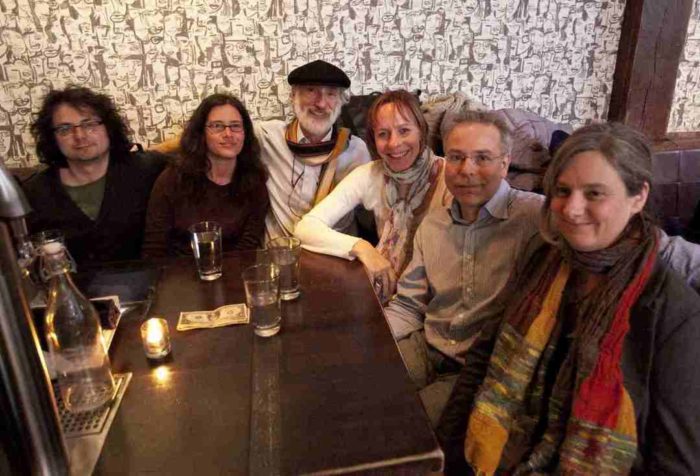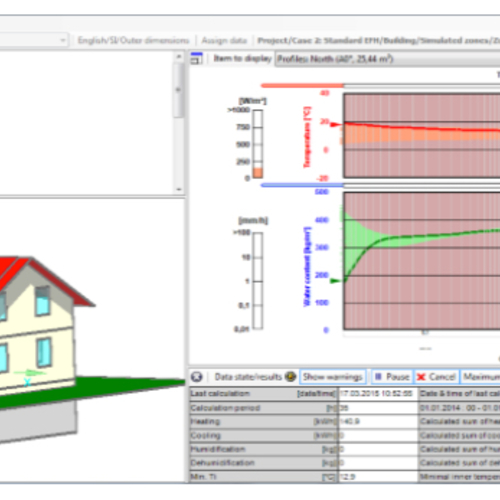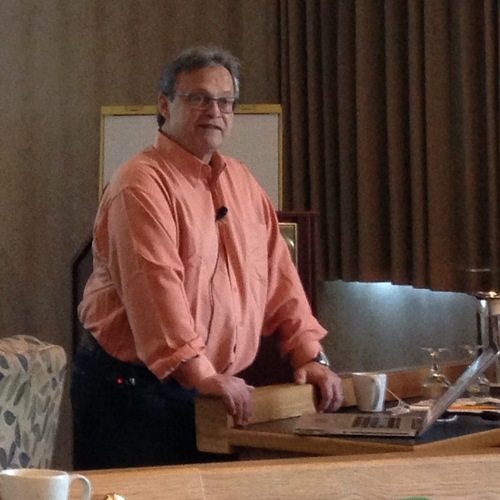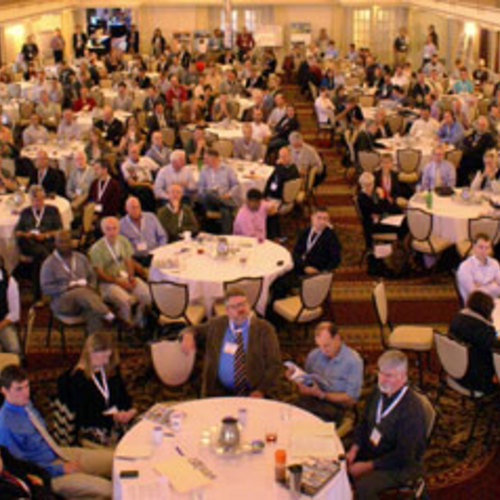
Image Credit: David Ritter
If you are ever suffering from insomnia, call me, and I will tell you all I learned about WUFI-Passive. It is the blessing (or curse?) of geekdom that led me enroll in a three-day-long WUFI-Passive training class (sponsored by PHIUS — the Passive House Institute of the United States) in downtown Chicago in early April.
Don’t get me wrong — I love Chicago, and I got there a day early to wander the fabulous architectural canyons, and visit a few old friends at the Art Institute, like El Greco, Rodin, and Picasso. And the class itself was conducted at the nexus of the universe of architecture, in the exquisite High Modern Equitable Building. One can stand in its plaza at Michigan and Wacker Avenues, and from that single vantage point scan the history the skyscraper — from its inception in the days of Burnham, Jenney, and Sullivan, through its exuberant celebrations of the Wrigley and Tribune Buildings, to the megalomaniac culmination of the Trump Tower. Fine art and architecture — and Passive House — the perfect concordance of right brain and left.
What is WUFI-Passive?
Simply put, WUFI-Passive is the next generation of energy modeling, on track to supersede PHPP (the Passive House Planning Package), which only three years ago I had imagined was its apotheosis.
What WUFI-Passive adds to the mix is a comprehensive analysis of the behavior of water vapor as it passes through walls, ceilings, and floors, over a period of years, and modeling of the energy consumed in removing water vapor from a given space. It then combines this information with another interface that includes all the inputs required for PHPP.
The result is a real-time, dynamic energy modeling system that factors in the full costs of dealing with cooling loads. This is a marked improvement over PHPP, which could only summarize thermal loads by month or year, and dealt with latent loads in a cursory fashion.
The PHI-PHIUS split
This all goes to the heart of the split between PHIUS and its mother organization, the Passive House Institute. As Passive Houses began to come on line in the United States, it became clear that PHPP — which was developed in the milder climates of Germany — was not ideally suited for the range of extreme climates here at home.
In class, it was noted that a recent Passivhaus project in New Orleans disappointed its planners — and occupants — because it failed to provide adequate comfort for its extremely humid climate. It was telling to hear from Katrin Klingenberg, the founder and guiding light of PHIUS, question some of the fundamental propositions of Passivhaus. WUFI-Passive will be the tool that gets us over that considerable hump.
The software is expensive
WUFI-Passive — in its present state — is still a bit of a kluge. Our instructor, Prudence Ferreira, who is likely to be the smartest-person-in-the-room wherever she goes, struggled with the idiosyncrasies of the program, and with class input, came up with a significant list of proposed refinements. I stumbled through the fast-paced class, often losing track of the lecture while I tried to correct some entry on our practice exercises. Moreover, WUFI-Passive is an expensive piece of software. (The current cost of WUFI-Passive is $593 per year, or $1,612 for three years.)
For the near future, we can still use PHPP to certify our projects — but the future of Passivhaus is headed down WUFI lane.
Alan Abrams is a Certified Passive House Consultant, a Certified Passive House Builder, a Certified Green Professional (NAHB), and a Certified Professional Building Designer (American Institute of Building Designers). He is also the owner of Abrams Design Build in Takoma Park, Maryland.
Weekly Newsletter
Get building science and energy efficiency advice, plus special offers, in your inbox.














12 Comments
'the future of Passivhaus is
'the future of Passivhaus is headed down WUFI lane'
it's interesting that none of the discussions or reports I've seen coming out of FRA have said that, in fact most of them say the opposite.
Fraunhofer
Here's a link to Fraunhofer's take on WUFI Passive: http://www.linkedin.com/groups/Fraunhofers-take-on-WUFI-Passive-3647672.S.240402980?qid=5ff1b41f-2061-46b1-9a0e-ec6589d1fb40
Also, dehumidification is not magic. There's no reason to "question some of the fundamental propositions of Passivhaus" because of latent loads. At the International Passive House Conference in Frankfurt this year, Jessica Grove-Smith and Juergen Schnieders gave a presentation on PHPP calculations in hot and humid climates. In summary "The PHPP is more frequently being used for planning buildings also in hot and/or humid climates. For better applicability, the algorithms for active cooling were reviewed, partially modified and additional features added. Comparisons of PHPP results with dynamic simulations confirm their accuracy." p. 397 of 17th Int'l PH Conference Proceedings.
PHPP is being given away by PHIUS. Wow.
This post notes that: "...in contrast to PHPP, which was provided for free to people seeking Passive House consultant training."
The PHPP is a proprietary piece of software with copyright protection. I wonder how many copies PHIUS has "given away"?
If Passive House Consultants in training, or practicing, want to use the PHPP, they can obtain it legitimately and at a very reasonable cost from my company, 475 High Performance Building Supply ,or The Small Planet Workshop or from CanPHI.
Corrections
At no time has PHIUS been giving away PHPP in any format. Alan Abrams already posted a correction on his website addressing this misstated fact here: http://abramsdesignbuild.com/correction-phpp-is-not-free/
PHIUS is giving away free 8-week licenses of WUFI Passive to all course participants.
The link to the Fraunhofer take on linked-in goes to a comment by a person who attended a presentation in Frankfurt on WUFI Passive. The quote is incorrectly presented as Fraunhofer's take on WUFI Passive and PHPP. The Frauhofer IBP office, when asked about the validity of the posted statement, has commented as follows: "The presenter is not a Fraunhofer representative. He is a professor at the University in Rosenheim. He did for sure not say that WUFI Passive is not capable of performing the analysis provided by the PHPP. The passive house verification is indeed a helpful addition to a full dynamic building simulation with WUFI Passive. It is (for most climate zones) not appropriate to rely solely on the monthly balance method when designing a passive house. We still have to come up with validation for the accuracy in varying climates. But that is true for the balance based method in WUFI Passive as well as for PHPP. "
Response to Katrin Klingenberg
Katrin,
Thanks for your comments, and for the correction. I have edited Alan's blog to reflect your correction.
for the record, Kat passed
for the record, Kat passed around PHPP files in our PHIUS training, with no verification that everyone had purchased it. pre-purchasing the software was not a pre-req for the class, so we had some late comers that hadn't purchased it. so it seems a bit disingenuous to claim, 'At no time has PHIUS been giving away PHPP in any format.'
Response to Mike Eliason and Bronwyn Barry
Mike and Bronwyn,
On the one hand, I can see why Ken Levenson is concerned that Katrin Klingenberg might be giving away free copies of PHPP. (Ken Levenson's company obtained the rights to sell PHPP in the U.S. after Katrin Klingenberg's organization lost the rights to sell PHPP. This was one of the fallouts of the PHI-PHIUS divorce.)
On the other hand, Mike and Bronwyn, it seems extraordinary that the two of you are focusing on the issue so intently. Clearly, bitterness over the divorce has not yet dissipated.
no free lunch
oy veh!
lest this tempest shatter our teapots, here's what led to my faux pas...after obsessing over PH for several years, I purchased a copy of PHPP in the summer of '08. I think the cost was about $100. It was all metric, and for someone who was never very good at learning any software from a manual, it was overwhelming.
and so it sat, gathering cobwebs on my hard drive, until Mike and Katrin brought training to Jessup, MD, in 2010. the first day of class, new discs were passed out--very likely there was discussion of whether trainees already had a license, but I just didn't recall it.
regrettably, time corrupts memory, and I erred in my original post on this detail--and caused embarrassment to people I hold in high regard. Mea Culpa!!!
so please, lets move on!
Alan Abrams
Certified Passive House Consultant and Builder
I work in Silicon Valley and my husband makes software
Thanks for the clarification Alan.
Not free, but was it given away?
I read Alan's blog addendum and it states that "the PHPP is not free" but does not deny that PHIUS gave the software away at his training session. The question remains whether PHIUS actually did give away the software or not? Alan's 'correction' post deftly circumvents the issue.
(Edited to correct the spelling of Alan's name - apologies.)
WUFI Passive
I sat in on Prudence's WUFI workshop at the Denver Passive House Convention 2012. It seems like a good program. It did need work then, and as I have heard from Kat, they are responding to those concerns. If Prudence is still having issues with the program now then it is still in need of work. I agree that Prudence is not only the smartest person in the room but also very good at teaching. She was great at taking the group through the complex bits of WUFI Passive. If anyone can not only understand the program but teach it is her.
After the workshop I decided to wait a bit before buying it. It is expensive and still needs some work. It is a great benefit that it also does the WUFI analysis. Love that part.
Until a later point in time I will take a look at this program again and maybe the price will come down a bit. I have always hated the European 'rent' a program system where you pay for a year's use or more years. The price of 460 euros ($599) Plus VAT which is 20% in some EU Countries (another $120) for one year's use. This is a huge cost for a consultant like myself.
It would be cheaper to buy it for 10 years but that is an up front cost of $2738 plus VAT of $547 or a total of $3285.
I'd love to have this program and use it for my building energy analyses, no question. I'd hope Fraunhofer would make it more affordable or allow for small groups of consultants to buy a group license.
Just my thoughts.
Chris West
Certified Passive House Consultant
Response to Chris West
Chris,
Thanks for your thoughtful and interesting comments.
Log in or create an account to post a comment.
Sign up Log in